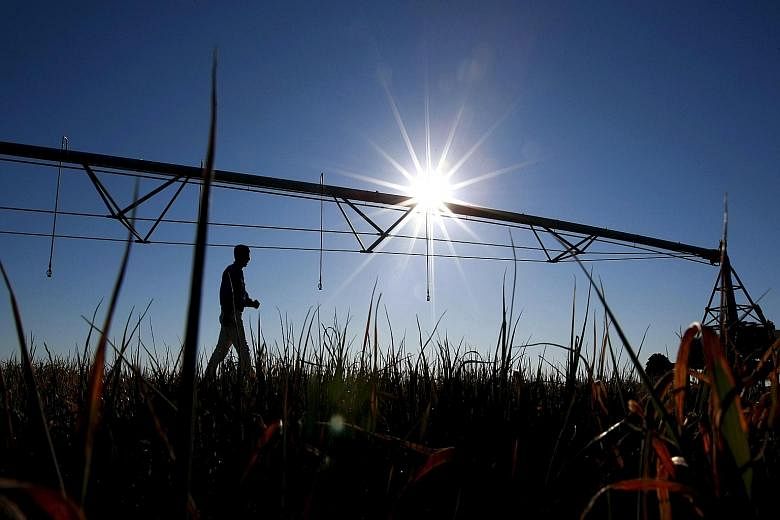SYDNEY • A pioneering Australian plan to improve water management in the world's driest inhabited continent is facing its first real test as an intensifying El Nino weather phenomenon threatens crops and builds tensions between farmers and environmentalists.
The three-year-old management scheme for the Murray-Darling basin - an area twice the size of Spain and home to 40 per cent of Australia's agricultural output - has been lauded globally and touted as a guide for drought-hit California.
Forged in the wake of a ruinous 14-year drought, the scheme set up a market-based water trading system, improved cooperation across state borders and focused on efficient water usage.
"All of these lessons are appropriate to the United States," said water policy expert David Feldman, from the University of California, Irvine.
Australia's Murray-Darling basin encompasses two major river systems in Australia's south-east but years of siphoning off water to irrigate crops has devastated waterways, creating dried-out wetlands and acidic soils, toxic algal blooms that threaten animal and human health, and high levels of salinity.
The 2012 water management plan instituted a raft of water-saving measures and set up a market-based system where farmers who have been allocated water rights under decades-old systems can trade their entitlements.
Under the scheme, the government buys water to keep the river healthy and farmers can buy water to irrigate crops in lean years or during the hot summer season. Investors are also welcome.
But changes to the Australian plan amid a resurgent El Nino weather pattern have worried environmentalists, who say its reputation and credibility are now at risk.
The plan initially met little resistance in rural areas but dry weather this year has depleted some dams that store river water, forcing farmers to accept big cuts in their water entitlements.
The loss is particularly hard for summer crops that rely heavily on irrigation, like cotton, rice and sorghum. Australia is the world's fourth-largest exporter of cotton.
Cotton accounts for about A$2 billion (S$2 billion) in export earnings, or about 7 per cent of total crop earnings, and production is forecast to fall nearly 10 per cent in the year to end-June next year, from last year's five-year low.
While the dry weather is hastening a shift from water-intensive crops like cotton and rice, it has also sparked calls for changes to the management plan as farmers say too much water is being used for the environment.
While farmers can buy water on the market, prices have jumped sharply to more than A$200 for each megalitre - or a million litres - in some regions, well in excess of viable limits for many who argue that having to compete with the government has driven up prices.
Earlier this month, Australian lawmakers nearly halved the amount of water the government can buy from local farmers, instead giving farmers subsidies to save water that would then be available for sale.
Environmentalists and some academics question the changes, which the Australian Conservation Foundation says will cost up to five times the market rate of buying water. There is also a physical limit on how much can be saved.
Academics said the scheme has had some success in improving the health of the river system, and will survive in its basic form, given the importance of the basin to all water users.
REUTERS

